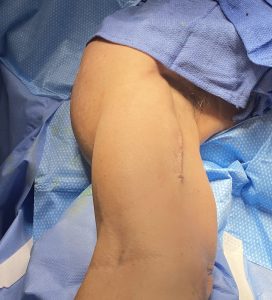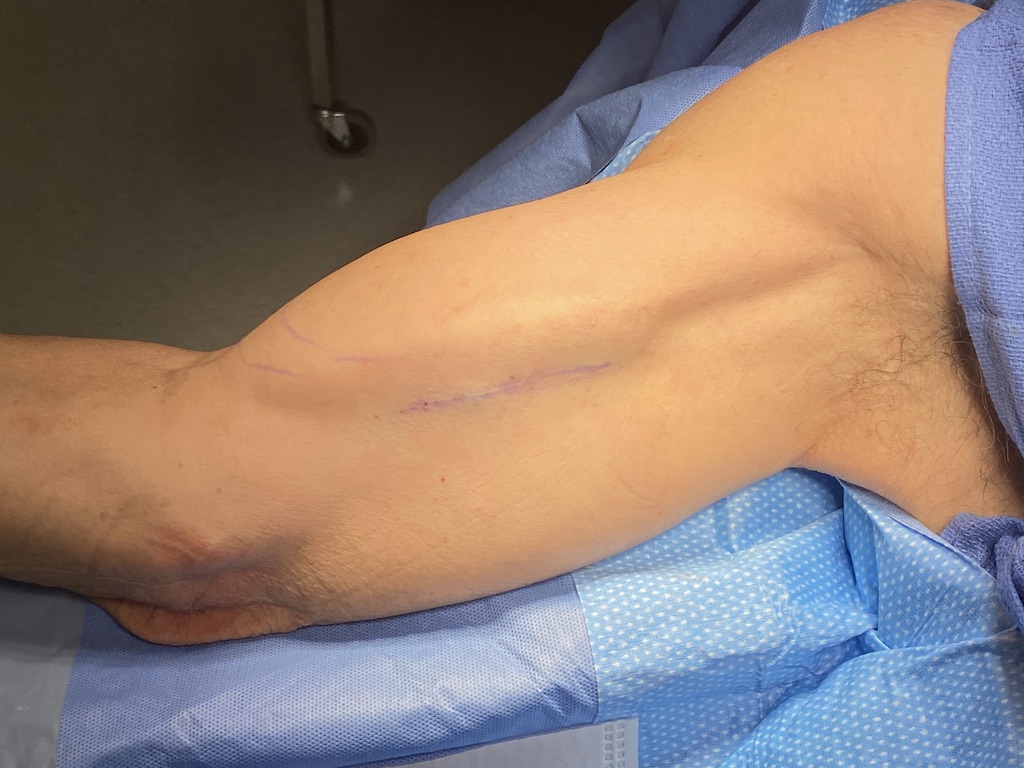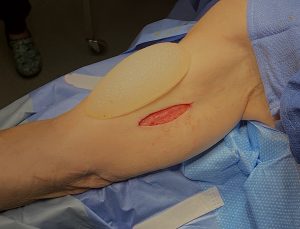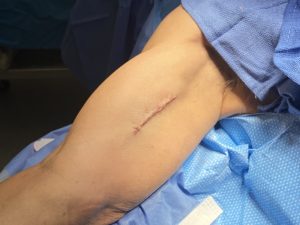Background: Arm implants is one surgical method to enhance the muscle appearance of the bicep and tricep muscles. There are various techniques in performing this surgery from implant selection, incisional access to pocket location. But regardless of the methods used implant complications can occur from infection to implant malposition.
Bicep implant malpositions are the most common complication and typically present as asymmetries between the two arms with one implant in a higher-lower or more medial-lateral position than the other side. This is related to pocket development and the potential differences in their creation between the two sides. The axillary incisional approach is prone to this problem than the medial arm incision.
One very unique complication of bicep implants is inversion or flipping of the implant into an upside down position. This can occur because the bicep implant has a high height to length ratio shape that is different from other longitudinally shaped implants. (e.g., calfs, thighs) Why this occurs long after implant placement is not clear but a smooth surrounding capsule, a non-adherent implant surface and the contraction of the bicep muscle make it a possibility. While some patients can flip the implant back into an uprght position in a self-resolving solution, others can not once it has become flipped.



Like all implant malpositions the question is whether it will do it again despite surgical treatment. Inversion or flipping of any implant upside down is a unique form of malposition. The pocket may be adequate but somehow the implant turns on itself. This undoubtably occurs because of the unique implant shape with a high height compared to its length. Similar inversions have also been seen in subfascial buttock implants.
Case Highlights:
1) Bicep implants can suffer a unique complication of implant flipping due to their shape.
2) The direct medial arm incisional access is the only effective approach to treating an inverted bicep implant.
3) Pocket expansion and implant suture fixation are intraoperative techniques to help prevent recurrent implant malposition.
Dr. Barry Eppley
World-Renowned Plastic Surgeon






